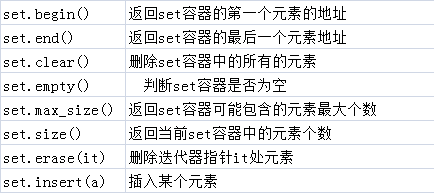1.memcpy:
从a数组中复制k个元素到b数组:
memcpy(b,a,sizeof(int)*k);
#include<cstring> #include<iostream> #include<cstdio> using namespace std; int a[10],b[20]; int main(){ for(int i=0;i<10;i++) cin>>a[i]; for(int i=0;i<10;i++) cin>>b[i]; memcpy(b,a,sizeof(int)*5); for(int i=0;i<20;i++) cout<<b[i]<<" "; }
【输入】
1 2 3 4 5 6 7 8 9 10
10 9 8 7 6 5 4 3 2 1
【输出】
1 2 3 4 5 5 4 3 2 1 0 0 0 0 0 0 0 0 0 0
(b数组的值被更新了,上面的话b数组的前k个值就被赋值变成了a数组的前k个值【从0开始qwq】b数组其他值不变)
将a全部赋值给b:
memcpy(b,a,sizeof(a));
#include<cstring> #include<iostream> #include<cstdio> using namespace std; int a[10],b[20]; int main(){ for(int i=0;i<10;i++) cin>>a[i]; for(int i=0;i<10;i++) cin>>b[i]; memcpy(b,a,sizeof(a)); for(int i=0;i<20;i++) cout<<b[i]<<" "; }
【输入】
1 2 3 4 5 6 7 8 9 10
10 9 8 7 6 5 4 3 2 1
【输出】
1 2 3 4 5 6 7 8 9 10 0 0 0 0 0 0 0 0 0 0
为什么突然写这个,因为用到了啊qwq(我是不会告诉你人家是题解上用的qwq)
2.数据类的东西吧qwq:
①int范围的无穷大:INT_MAX,无穷小INT_MIN。
②memset赋值:可以正常赋值的:-1,0;神奇的赋值:(一个很大的数)0xfff(大概几个f是没问题的qwq)
2.优先队列(priority queue):
首先,你需要:
#include<queue>
优先队列,顾名思义,是比对列更加强大的队列。它的功能强大在它可以自动排序。
自动排序是从大到小qwq
那么如何从小到大排呢?
重载来帮忙:(作为大括号不换行的异教徒)
struct node{ int x,y; bool operator < (const node & a) const{ return x<a.x; } };
声明:priority_queue<结构类型> 队列名;
常用声明格式:
priority_queue <node> q; //node是一个结构体 //结构体里重载了‘<’小于符号 priority_queue <int,vector<int>,greater<int> > q; //注意后面两个“>”不要写在一起,“>>”是右移运算符
//从小到大排序 priority_queue <int,vector<int>,less<int> >q;
//从大到小排序
基本操作:

3.set
头文件#include<set>
特点:
1、set中的元素都是排好序的
2、set集合中没有重复的元素
基本操作

前向星存图(一个神奇的超越邻接矩阵的存在)
首先讲一下需要定义的一些东西??
1.head数组:head[点数]:head[i]表示以当前点i为起点的最后一条边(这里的最后指的是编号【我们按输入顺序给边编一个号】)。![]()

这个图即为head[1]=4,表示以1为起点的边的最后一条是点1—>点5编号为4的边;
2.num_edge,表示边的总个数;
3.结构体:
struct Edge{
int next,to,dis;
}edge[边数];
这里,edge[i].next表示上一条以i为起点的边:![]() :
:
还是上面那个图,这里edge[4].next=3;
edge[i].to表示这条边i的终点;
edge[i].dis表示这条边的权值;
void addedge(int from,int to,int dis){
num_edge++;//因为存入一条边,总边数+1;
edge[num_edge].next=head[from];//新存入一条以from为起点的边,之前的以from为起点的最后一条边变成了新边的上一条边
edge[num_edge].to=to;//存终点
edge[num_edge].dis=dis;//存权值
head[from]=num_edge;//存入一条以from为起点的边,那么现在以from为起点的最后一条边就是新存入的边
}
提醒:如果要存的是无向图,进行程序时应该:addedge(from,to,dis),addedge(to,from,dis)各跑一遍,所开空间也要*2;
memset的用法
memset按位赋值:一位等于8字节(一个int型是4位),(一字节可以看做是二进制中的一位),对于memset,无论你这个数是什么,它都会把每一位都变成第一位的数,如果我们用memset赋值1的话,最后结果就是这个数:
 (一个蓝框为1位)
(一个蓝框为1位)
而memset(a,63,sizeof(a));就是把a数组的初始值赋成了以下这个数:


floyd:
- floyd实际上是一个DP(floyd:哈哈想不到吧qwq)
- floyd其实是一个三维DP
- floyd其实就跟01背包一样把k这一维降掉了,因此k要放在最外层枚举;
- 对于没有降维的三维floyd disk,i,j来讲,表示的是从i=>j只可能经过1——k这些点的最短路径;
sort-cmp:
cmp函数的含义:如果返回值是 True,表示 要把 序列 (X,Y),X放Y前。
Tarjan:
关于tarjan:【here】
slow slow read了解一下:
首先是关于数据读入的几个结点:
- 1e4 可以用cin,没问题
- 1e5 scanf
- 1e6 getchar(也就是平常写的快读)
- 1e7 fread(要背板子比较好)
- 1e8及以上 emm,再见!
现在来写一下1e6 getchar型slow slow read:
inline int read(){ int ans=0; char last=' ',ch=getchar(); while(ch<'0'||ch>'9') last = ch,ch=getchar();//过滤空格 while(ch>='0'&&ch<='9') ans=ans*10+ch-'0',ch=getchar(); if(last=='-') ans=-ans; return ans; }
然后大致就是用getchar读入(大概会快吧),然后转化成数字;
然后(不知道为什么最近那么喜欢用然后qwq),粘一粘各种不同大佬喜欢用的快读板子qwq:

int read(){ int x = 0; char c = gc(); while(!isdigit(c)) c = gc(); while(isdigit(c)){x = x * 10 + c - '0'; c = gc();} return x; }

template <typename T> inline void qr(T &x) { char ch; do { ch = getchar(); } while ((ch > '9') || (ch < '0')); do { x = (x << 1) + (x << 3) + (ch ^ 48); ch = getchar(); } while ((ch >= '0') && (ch <= '9')); }//(艰难的没看懂)

typedef int ll; inline void read(ll &num) { bool flag = 0; num = 0; char c = getchar(); while ((c < '0' || c > '9') && c != '-') c = getchar(); if (c == '-') { flag = 1; c = getchar(); } num = c - '0'; c = getchar(); while (c >= '0' && c <= '9') num = (num << 3) + (num << 1) + c - '0', c = getchar(); if (flag) num *= -1; } inline void read(char &c) { c = getchar(); while (c == ' ' || c == ' ' || c == '�' || c == ' ' || c == ' ') c = getchar(); } inline void output(ll num) { if (num < 0) { putchar('-'); num = -num; } if (num >= 10) output(num / 10); putchar(num % 10 + '0'); } inline void outln(ll num) { output(num); puts(""); } inline void outsp(ll num) { output(num); putchar(' '); } inline void outln(string str) { puts(str.c_str()); }
然后对于zay大佬的fread,大概是只能背个板子:
typedef long long int ll; namespace IPT { const int L = 1000000; char buf[L], *front=buf, *end=buf; char GetChar() { if (front == end) { end = buf + fread(front = buf, 1, L, stdin); if (front == end) return -1; } return *(front++); } } template <typename T> inline void qr(T &x) { char ch = IPT::GetChar(), lst = ' '; while ((ch > '9') || (ch < '0')) lst = ch, ch=IPT::GetChar(); while ((ch >= '0') && (ch <= '9')) x = (x << 1) + (x << 3) + (ch ^ 48), ch = IPT::GetChar(); if (lst == '-') x = -x; }
状态压缩中,如何较高效的求出共有多少个1:
(参考资料:求一个数的二进制序列中1的个数(3种方法))
比较高效的方法是x=x&(x-1),当x=0时,进行此运算的次数也就是1的个数;
int count_one3(int m){ int count = 0; while (m){ m = m&(m - 1); count++; } return count; }

